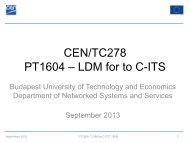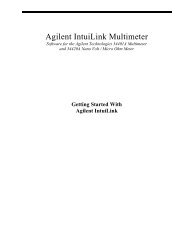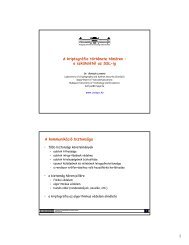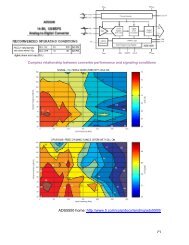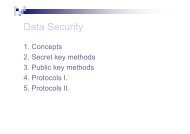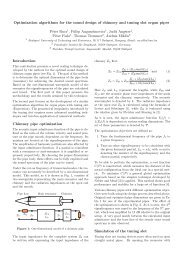HP 33120A User's Guide
HP 33120A User's Guide
HP 33120A User's Guide
Create successful ePaper yourself
Turn your PDF publications into a flip-book with our unique Google optimized e-Paper software.
Chapter 7 Tutorial<br />
Modulation<br />
Frequency Shift Key Modulation In Frequency-Shift Keying<br />
modulation (FSK), the function generator’s output frequency alternates<br />
between the carrier frequency and a second “hop” frequency. The rate of<br />
frequency hops is controlled either by an internal source or from an<br />
external logic input. FSK is essentially a special case of frequency<br />
modulation (FM) where the hop frequency is another way of specifying<br />
both the deviation and the modulating signal shape.<br />
The modulating signal shape is always a square wave with an<br />
amplitude of zero to +1. The deviation is either positive or negative<br />
depending on whether the hop frequency is larger or smaller than the<br />
present carrier frequency (as shown below). The internal FSK rate<br />
generator specifies the period of the modulating square wave signal.<br />
When selected, the external FSK input replaces the internal FSK rate<br />
generator to directly control the frequency hop rate. A TTL “low” input<br />
always selects the carrier frequency and a TTL “high” always selects the<br />
hop frequency. The logic sense of the external FSK input can effectively<br />
be changed by interchanging the carrier and hop frequency values.<br />
Deviation = Hop Frequency – Carrier Frequency<br />
An FSK waveform with a 3 kHz carrier waveform and 500 Hz<br />
“hop” waveform (the FSK rate is 100 Hz).<br />
290



